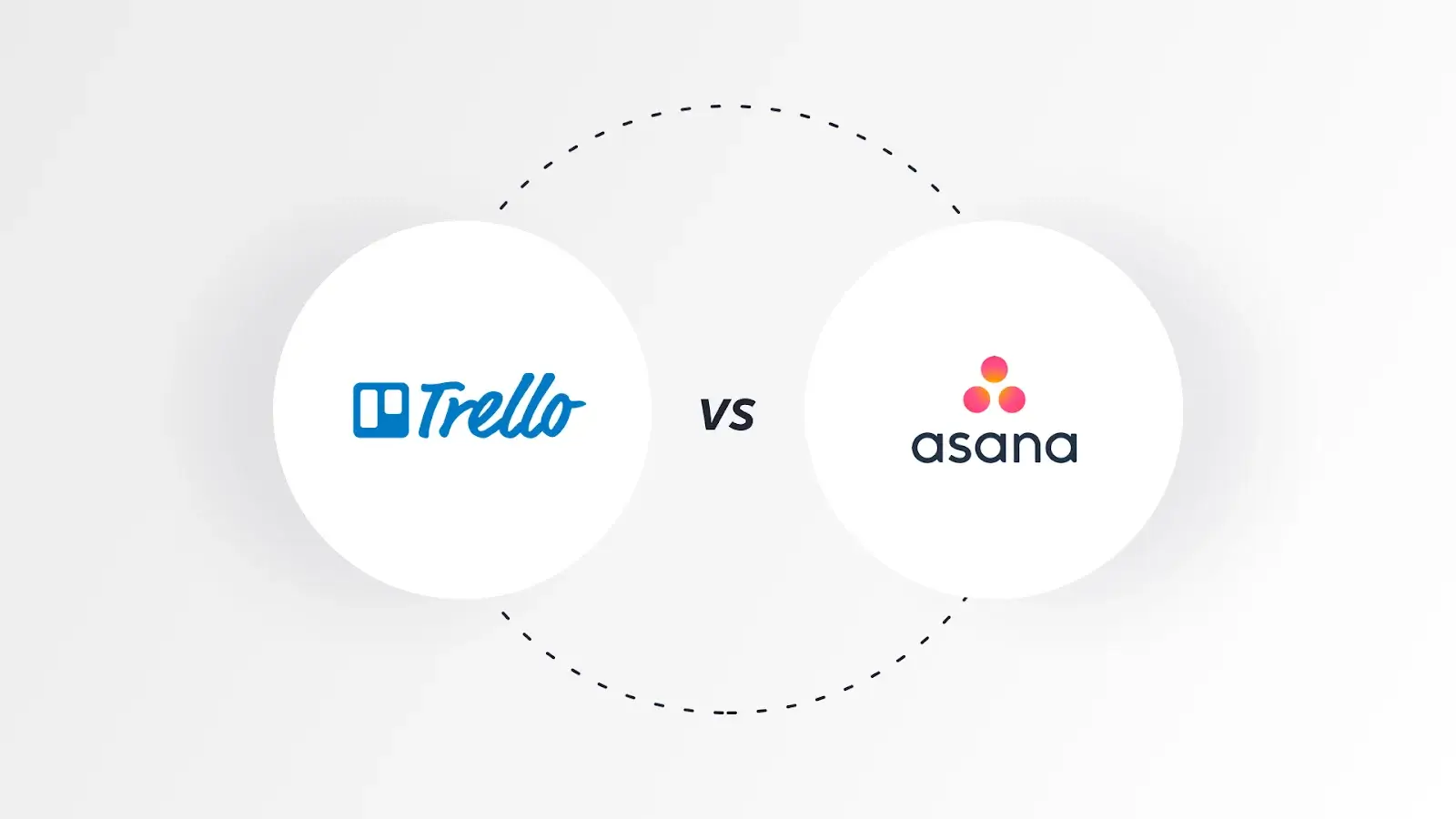Whenever the topic pertains to project and job administration, Trello vs Asana are practically household names. While both systems include useful capabilities that enable individuals or groups to monitor the advancement of various activities and projects, it’s clear to observe where they vary when you look closely.
Each one of these well-known systems is an excellent option for teams searching for an efficient project administration solution. However, considering the sorts of tasks you’re focusing on, the abilities of your colleagues, and the demands of your firm, you may be more efficient with one option over the other.
Trello
Trello is a highly graphical project management solution that puts essential team initiatives front and center. Teams use Trello to construct kanban-style boards for viewing all of their present tasks in a single view, combining current projects, forthcoming projects, and beyond.
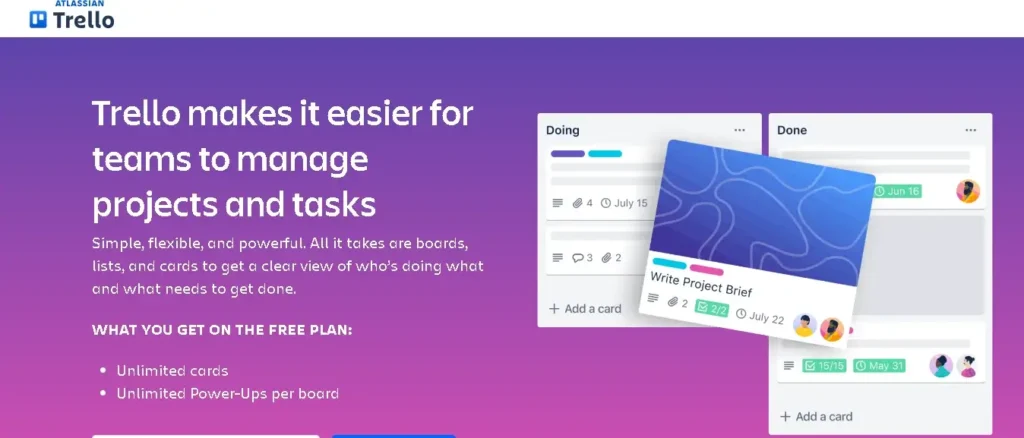
Asana
Asana is a work management program that is cloud-based and focuses on managing projects and collaboration among teams. Being able to break down collective objectives into achievable projects and activities while remaining up to current on goal progress is a fundamental advantage of using Asana.
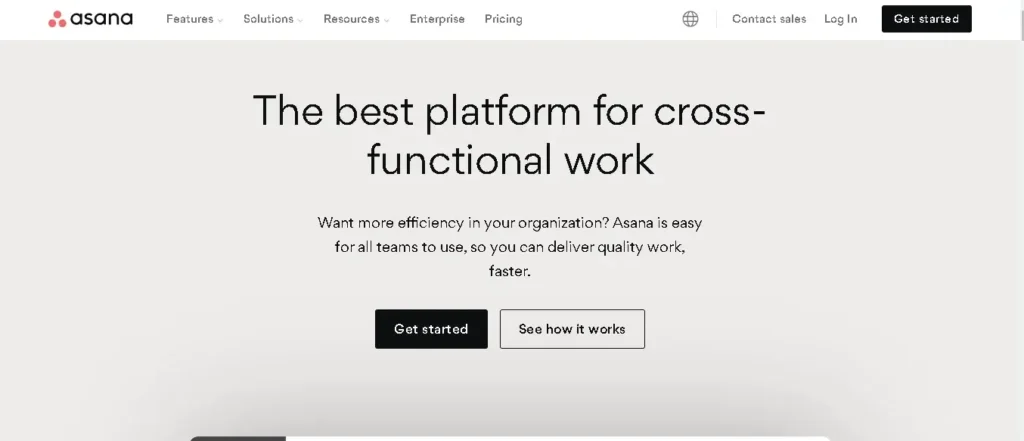
Amazing Features of Trello vs Asana
Here are some feature comparisons of Trello vs Asana.
Features of Asana
Asana is well-known for its project management skills, which allow teams to quickly organize and work on projects. For the purpose of making a project more manageable, teams might divide duties into sub-tasks. Here are a few of Asana’s most notable characteristics:
- Automation: Using Asana, groups may define guidelines to automate certain activities, such as auto-reminders, job sorting by deadlines, or generating an automatic Google Calendar for fresh assignments.
- Workflow Builder: Using Asana, groups may construct their very own unique graphical workflows by leveraging automation to link duties and teams.
- Goal Monitoring: Assist your team in aligning corporate and project objectives by setting them ahead of time and measuring their progress during the life of a project.
- Visual Demands: Understand the amount of work every member of the team must do to properly allocate duties and better anticipate project progress.
- Various Project Perspectives: Choose from a variety of perspectives, such as timeline, timetable, Gantt, Kanban, and others, to enable everyone on the team to visualize projects as they see fit.
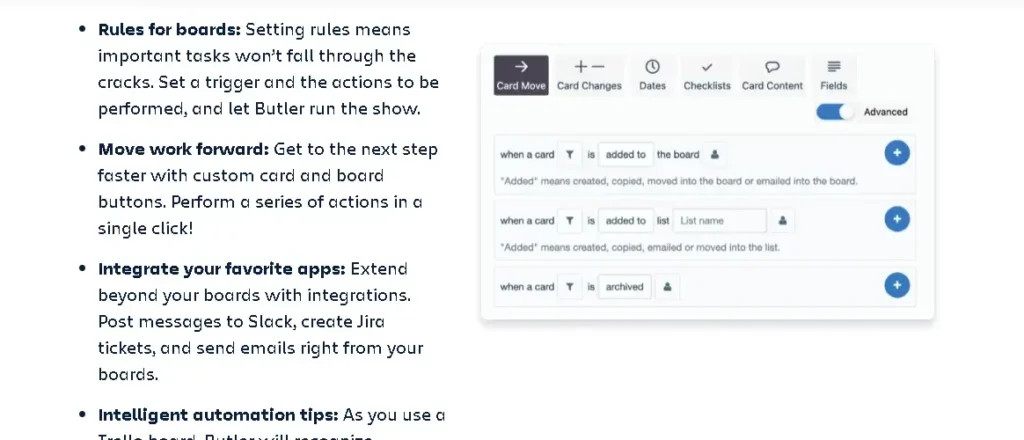
Features of Trello
Trello’s card-based panels mimic a Kanban-style UI, resulting in it being ideal for those who like this type of graphical management of tasks. Trello’s capabilities emphasize straightforwardness and ease of use that are attractive to a wide range of customers, while some groups might consider it lacking in depth. Here are some of Trello’s top features:
- Projects are defined on distinct cards that are exhibited on a display and may be moved around various rows as projects progress.
- Card Customizations: Every card may be fully customized to meet your specific requirements, including labels, prioritization, deadlines, tags, categories, and others.
- Checklists: You may add a list of items to each card to further split down a task along with sub-tasks.
- Attachments: Customers may add numerous attachments to every card, such as documents, links, photos, and clips, to ensure all project materials are saved on your Trello board.
- Butler for Automation: Utilizing Trello’s Butler feature, customers may develop without code automation for their own boards and integrations in order to operate more effectively and automate chores.
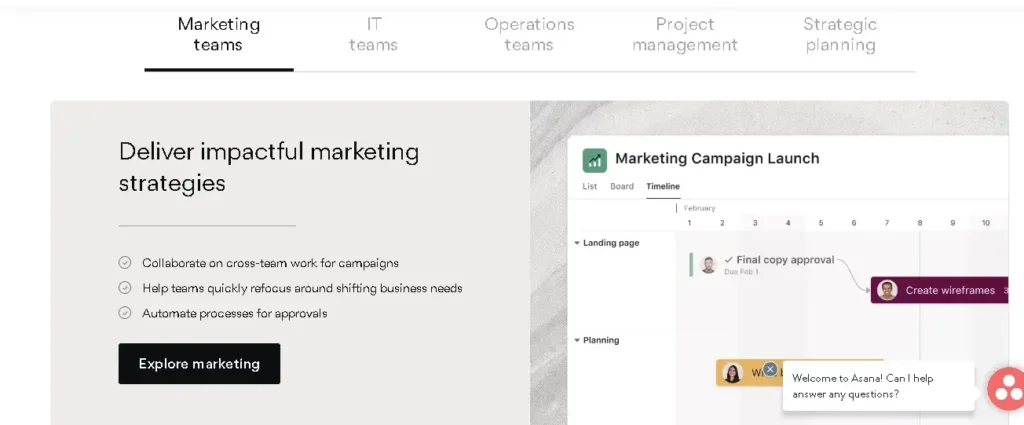
Comparison of Integrations Between Trello vs Asana
Integrations are critical for optimizing the task’s workflow. The ideal managing projects solution will be able to connect to your current work tools so that your present workflow is not disrupted. Here are some of the connectors available from Trello vs Asana.
Asana’s Integration
Asana provides customers with a plethora of alternatives, with over 200 app connectors to select from. Customers may use Slack, Zapier, Microsoft Teams, and Loom to link their current work tools and develop automated processes that trigger activities within these apps. There’s also a Trello interface, so teams may get the most out of both tools if they wish to utilize both for various sorts of tasks.
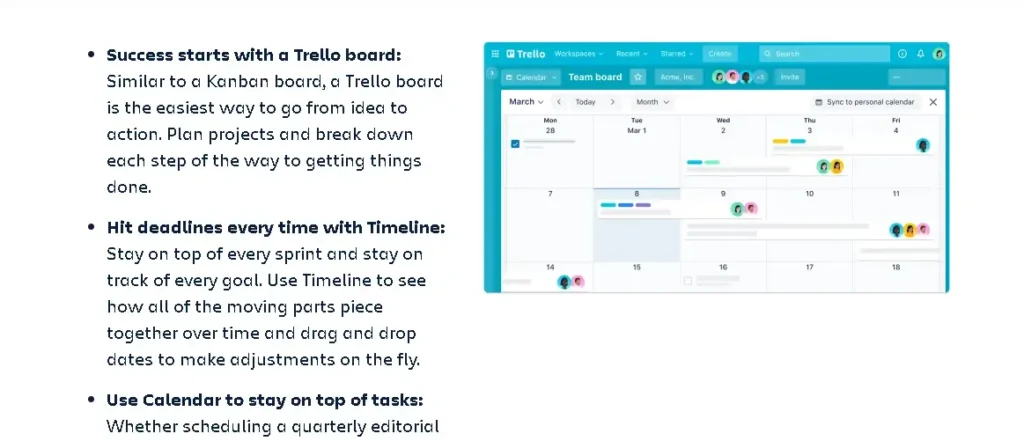
Trello’s Integration
Power-ups are Trello connections that enable customers to link up with third-party programs to boost productivity inside the platform itself. There are over 200 connectors available, including popular ones like Google Calendar, Slack, Jira, and others. Users may utilize Trello’s Butler functionality to rapidly establish automation such as sending to Slack or generating Jira tickets.
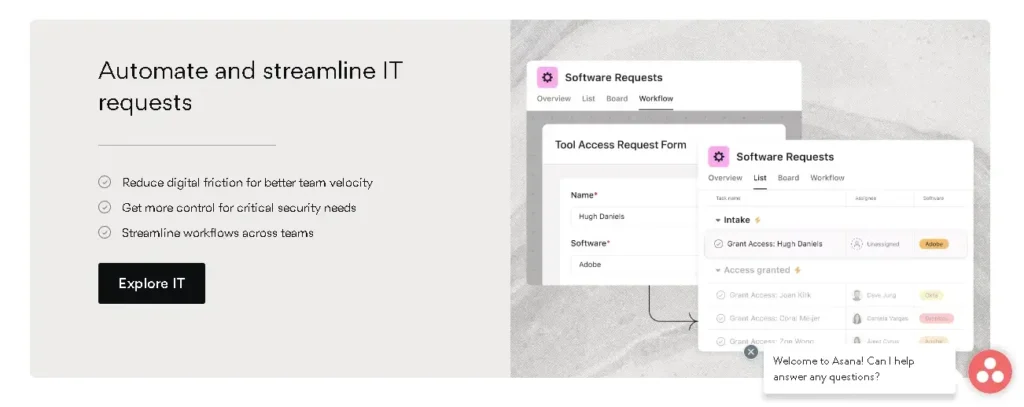
Trello vs Asana: The Pricing Comparison
Whenever it concerns choosing the proper project management application, price isn’t everything, but it’s certainly a significant aspect to consider. You don’t have to go for the inexpensive program, but rather the one that provides the most benefit to the members of your organization.
Pricing Plan of Asana
There are a total of four distinct options offered, as stated in Asana’s pricing section:
- If your team has ten or fewer members, you can utilize the Basic Package absolutely free. The Basic package offers a limitless amount of storage, three distinct project viewpoints, smartphone access, and a limitless amount of projects.
- Premium: For $10.99/user/month, Premium membership provides customers with the ability to use forms, dashboards, and four project viewpoints, as well as the opportunity to connect a limitless quantity of guests.
- The Business Package costs $24.99 per user each month and offers more sophisticated capabilities such as interfaces with programs such as Salesforce and Tableau, comprehensive reports, timekeeping, and the ability to develop custom forms.
- Asana’s Enterprise Package offers priority customer assistance as well as provisioning of users and de-provisioning.
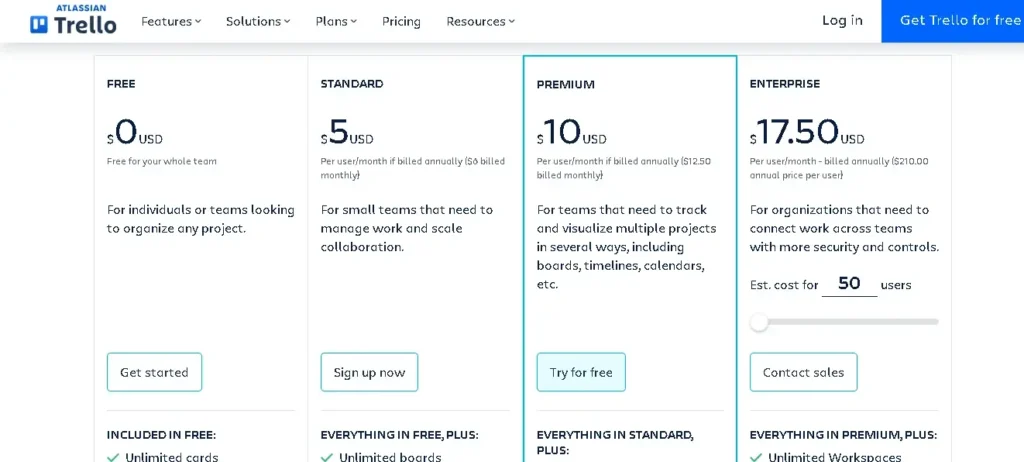
Pricing Plan of Trello
Trello’s price website also offers four distinct choices to pick from:
- Basic: Individuals and small groups can sign up for a free lifetime plan that offers up to ten panels per office space, limitless cards, limitless Power-Ups, no limits on storage for files up to ten megabytes, and 250 Workstation command executions.
- Trello’s Standard Subscription, which costs $5 per user/month, is excellent for small organizations searching for collaborative solutions. Comprehensive checklists, configurable fields, unrestricted space for files up to 250MB, and a thousand Workbench command executions are all included.
- Premium: The Premium package starts at $10 per user/month and offers additional work views, limitless Workspace command executions, improved safety and administration tools, information export, and more.
- Enterprise: The Enterprise package is appropriate for bigger organizations and costs $17.50 per user/month. It includes features such as organizational authorizations, accessible panel management, Power-Up management, increased safety and control systems, and more.
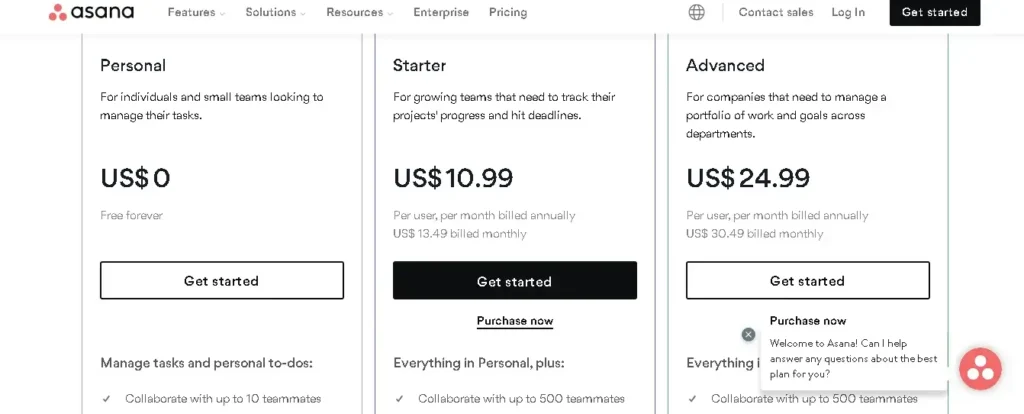
Trello vs Asana Which Is Easy
The simplicity of working with a project management tool defines how accessible it is and how quickly your staff will adjust to an unfamiliar tool. Although both Asana and Trello are challenging to operate, the usability of each platform varies somewhat.
Asana is a practical tool with solid project management capabilities and an overall user-friendly interface. However, when compared to Trello, the learning curve is likely to be longer due to the fact there are so many functions and possibilities to understand. Furthermore, some customers note that managing more complicated projects on Asana can be difficult, but overall the majority of projects, customers on Asana’s TrustRadius review page indicate that the tool is “easy to use” and overflowing with helpful features.”
Trello is noted for its straightforward UI and graphical approach, which makes it easy to use for anybody with very little technology knowledge. Its Kanban-style panels make tracking chores and assignments a snap, and the tool isn’t bloated with extras that could make things more complicated. Customers on Trello’s TrustRadius review page remark on how Trello’s versatile UI “makes company objectives and target planning easy” and how simple it is to connect with apps developed by third parties.
Customer Support Comparison of Trello vs Asana
A solid client support staff guarantees that everyone on your team can get the best out of your selected project-handling tool by assisting with training and adoption. Here are the customer support choices for Trello and Asana.
Customer Support of Asana
Asana offers a variety of support solutions, ranging from self-service to agent help.
- Help Desk
- Chatbot Support
- Asana’s client support team provides classes, webcasts, and training.
- A developer’s manual
- Community Form
After you submit a form online, an assistance member will be in touch with you. Asana states that support personnel are accessible 24 hours a day, seven days a week, thus queries should be answered quickly. Furthermore, higher-tiered subscription programs provide you with additional personalized assistance alternatives.
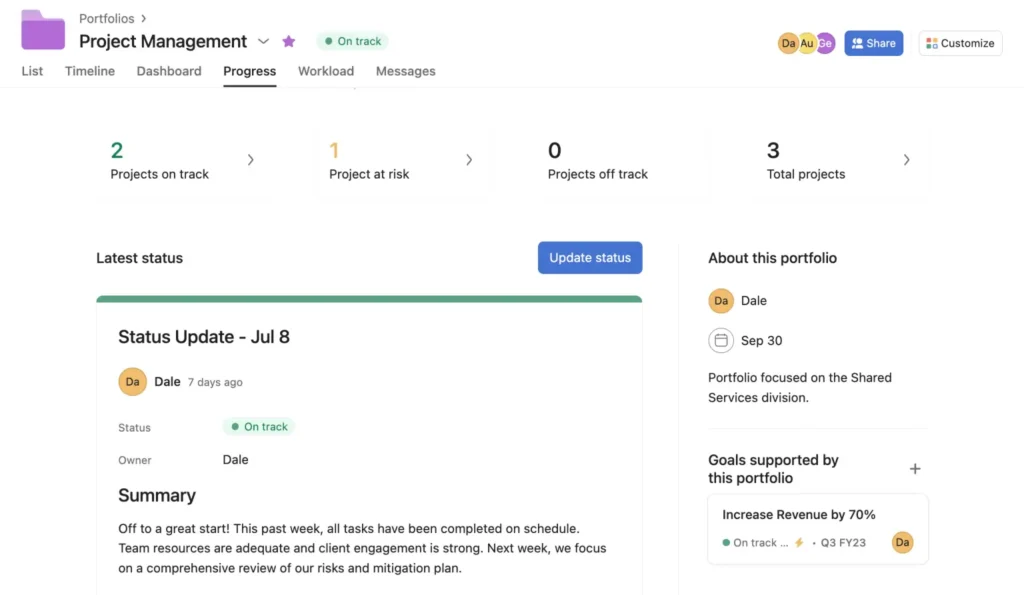
Customer Support of Trello
The sort of assistance you receive from Trello is determined by the plan you choose:
- Free Plan: Community assistance
- Standard Plan: Support throughout local office hours is
- Premium: round-the-clock client service
- Assistance for customers is accessible twenty-four hours a day, seven days a week with the Enterprise Plan.
packages will also provide you with faster response times. Trello provides self-service materials such as tutorials, webinars, frequently asked questions, and guides as well as customer assistance.
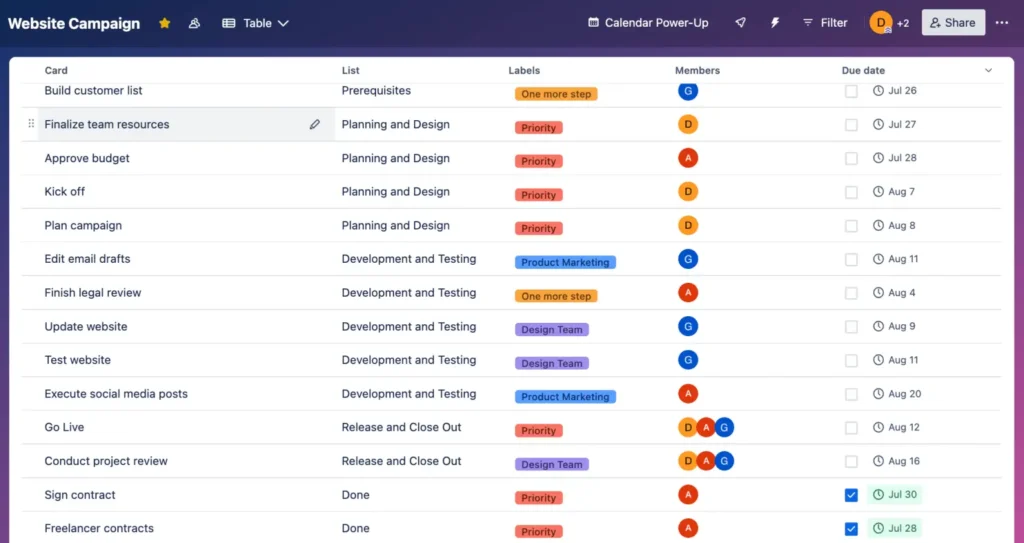
Final Thoughts on Trello vs Asana
Selecting among project management systems is more dependent on your team’s individual desires and requirements than on the offers of a platform. Think about the following while deciding between Trello and Asana:
- Trello may be the appropriate solution if your team likes a straightforward, pictorial approach to project administration and works on minor projects or assignments on a regular basis. The platform is simple to use, which makes it great for teams of fewer people who don’t have the time to devote to a somewhat lengthier initial setup procedure.
- Asana is the ideal option for teams looking for a more features platform with an emphasis on task management features. Asana is capable of handling more complicated processes and bigger-scale tasks, making it perfect for bigger groups that require more advanced project management tools.

